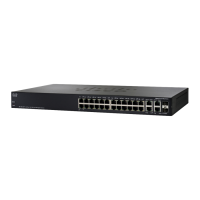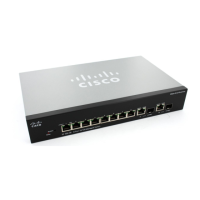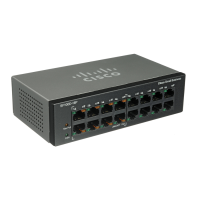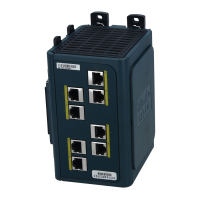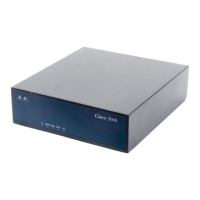Smartport
Configuring Smartport Using The Web-based Interface
Cisco Small Business 200, 300 and 500 Series Managed Switch Administration Guide (Internal Version) 173
11
NOTE There is no method to validate macro parameters because they do not have a type
association. Therefore, any entry is valid at this point. However, invalid parameter
values may cause errors to occur when the Smartport type is assigned to an
interface, applying the associated macro.
Smartport Interface Settings
Use the Interface Settings page to perform the following tasks:
• Statically apply a specific Smartport type to an interface with interface
specific values for the macro parameters.
• Enable Auto Smartport on an interface.
• Diagnose a Smartport macro that failed upon application, and caused the
Smartport type to become Unknown.
• Reapply a Smartport macro after it fails for one of the following types of
interfaces: switch, router and AP. It is expected that the necessary
corrections have been made prior to clicking Reapply. See the workflow
area in Common Smartport Tasks section for troubleshooting tips.
• Reapply a Smartport macro to an interface. In some circumstances, you
may want to reapply a Smartport macro so that the configuration at an
interface is up to date. For instance, reapplying a switch Smartport macro
at a device interface makes the interface a member of the VLANs created
since the last macro application. You have to be familiar with the current
configurations on the device and the definition of the macro to determine if
a reapplication has any impact on the interface.
• Reset unknown interfaces. This sets the mode of Unknown interfaces to
Default.
To apply a Smartport macro:
STEP 1 Click Smartport > Interface Settings.
Reapply the associated Smartport macro in the following ways:
• Select a group of Smartport types (switches, routers or APs) and click
Reapply Smartport Macro. The macros are applied to all selected
interface types.
• Select an interface that is UP and click Reapply to reapply the last macro
that was applied to the interface.
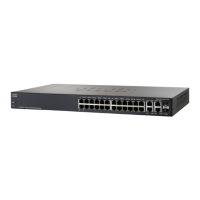
